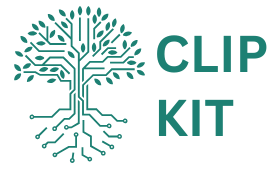Table of Contents
ToggleIn a world where everything seems to be a click away, knowing how to code in HTML is like having a secret superpower. It’s the backbone of the web, the magic behind every website you visit, and the language that turns your wildest online dreams into reality. If you’ve ever wanted to create your own website or customize an existing one, diving into HTML coding is the first step to unleashing your inner tech wizard.
Overview of HTML Coding
HTML, which stands for HyperText Markup Language, serves as the backbone of web development. This coding language structures web content, allowing developers to design pages that are visually appealing and functionally effective. Each element in an HTML document, such as headings, paragraphs, and links, plays a specific role in how information is displayed and how users interact with it.
Learning HTML provides the necessary skills to create personalized websites, making it an invaluable tool for anyone interested in web design or development. It includes various tags that dictate how text and images appear on-screen. Elements like <h1> for main headings and <p> for paragraphs illustrate content relationship and hierarchy.
A solid understanding of HTML facilitates the integration of multimedia, form inputs, and other interactive features. For example, <img> tags allow the embedding of images, while <a> tags link to other pages. Mastering these components enhances user experience and engagement on websites.
Since HTML is a fundamental building block, knowing it opens doors to advanced topics like CSS and JavaScript, which further enhance web functionality and design. Comprehensive resources, including online courses and tutorials, support learners as they develop their coding skills. Many practice platforms offer hands-on experience, allowing beginners to experiment and refine their abilities.
As HTML coding forms the foundation of the web, its mastery empowers individuals to realize their online aspirations effectively. Engaging with this language not only benefits personal projects but also extends to professional opportunities in the ever-evolving digital landscape.
Getting Started with HTML

Learning HTML coding involves setting up the right environment and grasping the basic syntax. Each step builds a foundation for effective web development.
Setting Up Your Environment
Creating a suitable environment for HTML coding requires just a few steps. Begin by choosing a text editor that suits personal preferences, such as Visual Studio Code or Sublime Text. Ensure that a web browser, like Chrome or Firefox, is installed to preview web pages. After selecting the tools, create a new folder on the computer, naming it appropriately for easy access. This organized setup streamlines the development process and allows for smooth testing of HTML files.
Understanding Basic Syntax
Familiarizing oneself with HTML’s basic syntax is crucial for effective coding. Every HTML document begins with a doctype declaration, followed by opening and closing tags. Tags, like <html>, <head>, and <body>, structure the page content. Use angle brackets for defining tags, and always wrap content between opening and closing tags. Inline elements, such as <span>, differ from block elements, which include <div>. A clear understanding of attributes, which provide additional information about elements, aids in enhancing functionality.
Essential HTML Elements
HTML elements form the foundation of web content structure. Understanding and utilizing these key components is crucial when creating engaging websites.
Headings and Paragraphs
Headings define the structure and hierarchy of web pages. Using <h1> for main titles, followed by <h2>, <h3>, and so on, allows users to easily navigate content. Paragraphs, created with the <p> tag, present text in a readable format. Making proper use of headings and paragraphs enhances article flow and clarity, which helps readers process information effectively.
Links and Images
Links serve as vital navigational tools on the web. The anchor tag <a> enables users to click and access other pages or resources. This connectivity enriches web experiences. Images, inserted with the <img> tag, add visual appeal and support textual content. Providing alternative text using the alt attribute ensures accessibility for all users, improving overall usability.
Lists and Tables
Lists organize content succinctly. Unordered lists, created with <ul>, as well as ordered lists with <ol>, facilitate easy information consumption. Tables, defined by the <table> tag, enable structured data representation, making complex information clearer. Utilizing lists and tables effectively enhances user comprehension and ensures information is displayed logically.
Advanced HTML Concepts
Advanced HTML concepts enhance web development capabilities, allowing for streamlined user interaction and improved accessibility.
Forms and Input Elements
tag defines a form, and various input types like ,Tips for Learning HTML Coding
Learning HTML coding involves utilizing various resources and tools that simplify the journey. Students can find online platforms like Codecademy, freeCodeCamp, and W3Schools that offer interactive tutorials. These resources often provide step-by-step instructions and practical examples. Additionally, text editors such as Visual Studio Code or Sublime Text facilitate straightforward coding, enhancing workflow and efficiency. Chrome Developer Tools enables immediate previews, allowing learners to see changes in real time.
Completing practice projects is vital for reinforcing HTML skills. Beginners can start with simple tasks such as creating a personal portfolio website or designing a basic blog layout. Coding a product landing page helps grasp formatting concepts while implementing links and images. Building a contact form integrates input elements, helping understand user interaction. Each project should gradually increase in complexity, encouraging continuous learning and application of new techniques.
Mastering HTML coding is a crucial step for anyone looking to thrive in the digital landscape. It equips individuals with the foundational skills necessary for web development and design. By understanding HTML’s structure and elements, learners can create engaging and functional websites that cater to user needs.
The journey into HTML opens doors to advanced topics like CSS and JavaScript, enhancing both design and interactivity. With the wealth of resources available, including online courses and practice platforms, anyone can embark on this rewarding learning path. As they gain confidence and expertise in HTML, they’ll be well-prepared to tackle the challenges of the ever-evolving web.




